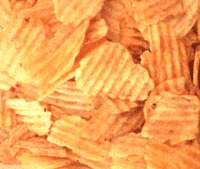Better growth without acrylamide

Low levels of acrylamide in maternal blood give better foetal growth according to two recent studies from the Norwegian Mother and Child Cohort Study (MoBa). Most acrylamide intake comes from heat-treated food but it can also be found in tobacco smoke and in the environment.
In the first study, the daily intake of acrylamide was estimated from a dietary questionnaire completed during pregnancy by over 50,000 participants in MoBa. Blood samples were also taken from a small group of participants to measure acrylamide levels which proved to be consistent with the amount of acrylamide in the diet.
In the other study, levels of acrylamide-like substances in the blood were measured in 1100 mothers and their children in Norway, Greece, Spain, the UK and Denmark as part of the EU project NewGeneris. A clear correlation was found between the levels of acrylamide in maternal and umbilical cord blood.
Acrylamide affects foetal growth
Both studies found that foetal growth was affected:
- The average birth weight was 132 g higher with low levels of acrylamide in the European study, with slightly lower differences in MoBa
- Head circumference was higher in children with low levels of acrylamide
- A correlation between acrylamide and birth weight was found in all five countries, but the levels of acrylamide varied between countries.
- The difference in birth weight was comparable for smokers and non-smokers, although smoking was a greater contributing factor than diet among smokers.
Animal studies have shown that acrylamide affects reproduction, growth and development. As acrylamide is transferred from mother to foetus it is important to study the effects on the child. Since acrylamide is mostly obtained from the diet, other substances in the same food products may be difficult to distinguish in this type of study. Further studies will also investigate whether the combination of different contaminants has more of an effect than individual substances. The effect of acrylamide on factors other than foetal growth has not yet been studied.
More information: Pedersen M et al. Birth weight, head circumference, and prenatal exposure to acrylamide from maternal diet: The European Prospective Mother-Child Study (NewGeneris). Environ Health Perspect 120:1739–1745 (2012). (Open access)
Duarte-Salles T et al. Dietary acrylamide intake during pregnancy and fetal growth - Results from the Norwegian Mother and Child Cohort Study (MoBa). Environ Health Perspect 2012, doi:10.1289/ehp.1205396 (Open access)
















